Many mothers are unaware of how often to replace breast pump parts. Some parts wear down over time, tearing or becoming too strained, resulting in a loss of suction when using your pumping.
In most cases, a new part will solve the problem immediately.
If your pump appears to be losing suction, examine your parts, especially the valves, for wear, fraying, or straining, and replace as needed.
Here is a list of the breast pump parts and accessories you should change regularly, along with how often you should do it.
Why Should Breast Pump Parts Be Replaced?
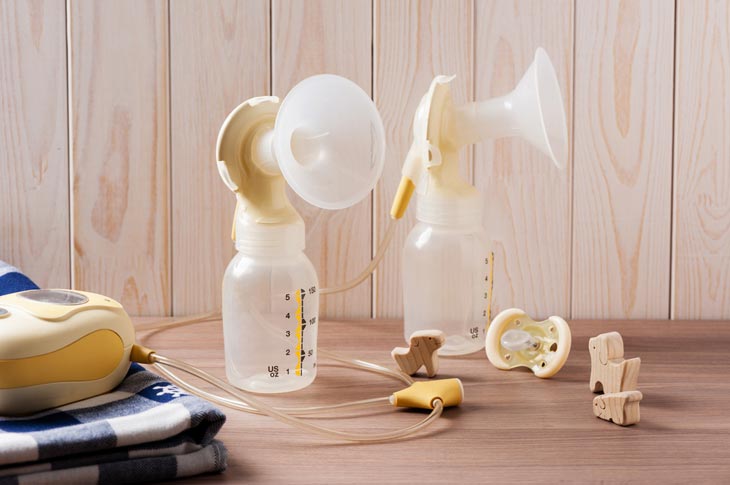
When you use boob pumping, you may use it once or twice a week or several times a day.
Regardless of the frequency, wear and tear will undoubtedly occur, necessitating the replacement of additional pumping parts.
Regular usage of your breast pump can cause the tougher functioning parts to become considerably worn down, strained, or frayed over time.
Breastfeeding mothers may believe their milk production is no longer ideal or that the breast aspirator is faulty or damaged when the parts begin to degrade.
Whether your breast pump equipment isn’t performing as effectively as it once did, you should first see if any parts need to be changed.
Bacteria can build up in nooks and cracks in abused areas, making cleaning a bit more difficult.
And deteriorated or contaminated breast pump parts will impair your milk and, of course, your little one’s health.
So, how often should you replace breast pump parts?
How Often To Replace Breast Pump Parts
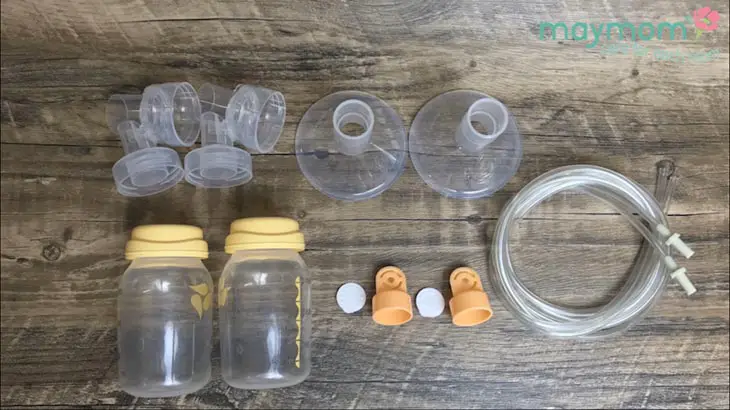
The procedure of replacing pump parts might be a little perplexing at times. What components do you need to replace? What is the recommended frequency of changing them?
Valve Membranes
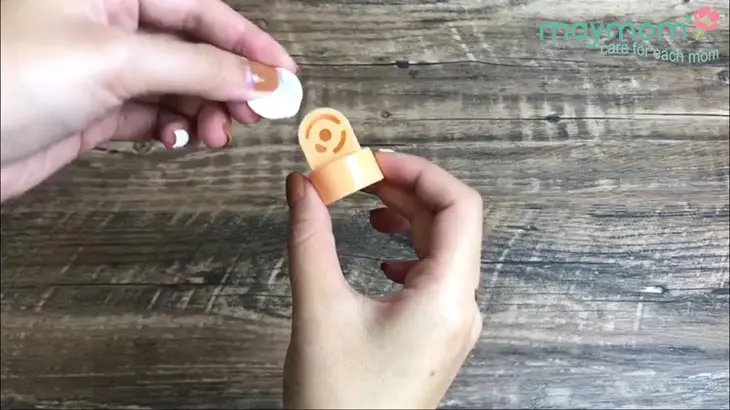
Many moms select pumping boobs, including a valve membrane that permits milk to be suctioned from the breast.
The yellow part of the valve membrane is the valve, while the white part is the membrane.
The small white flap helps to link the hard plastic valves to the valve membranes.
How often to replace valve membranes: Replace valve membranes every 2-4 weeks if everyone pumps three or more on a daily basis.
Replace every two months if you pump three times a day or less.
Valves

Suction can draw milk from your breasts thanks to the duck valves. The soft silicone duck valves stretch when the pump’s motor engages the valve.
Duck valve replacement frequency: Duck valves should be replaced every month if you pump three or more times per day. Replace every 2-3 months if you do not pump as much as three times a day.
Backflow Protector
Backflow guards aren’t standard on all aspirators, but they preserve breast milk collectors and moisture out of the tube if yours does.
This is crucial because the tubing must stay dry and free of moisture.
How often should they be replaced?
Backflow protectors should be replaced every three months if you pump three times a day or more. Replace every six months in case you pump fewer than three times per day.
Tubing
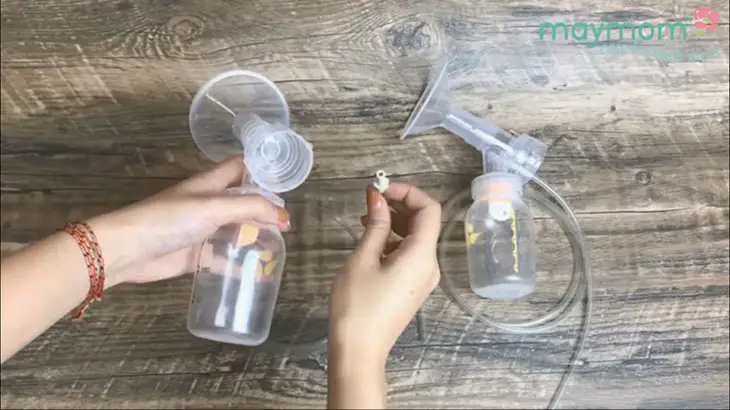
Tubing connects the pump motor to the pump components and bottles.
If the tubing moves about or easily slides off and on, or if moisture or breast milk seeps inside your pump, change it immediately.
In general, after 1-3 months is the proper time for a replacement. Ensure your pumping breast tubing is totally dry before using it if you hand wash it.
Breast Shields or Breast Pump Flanges
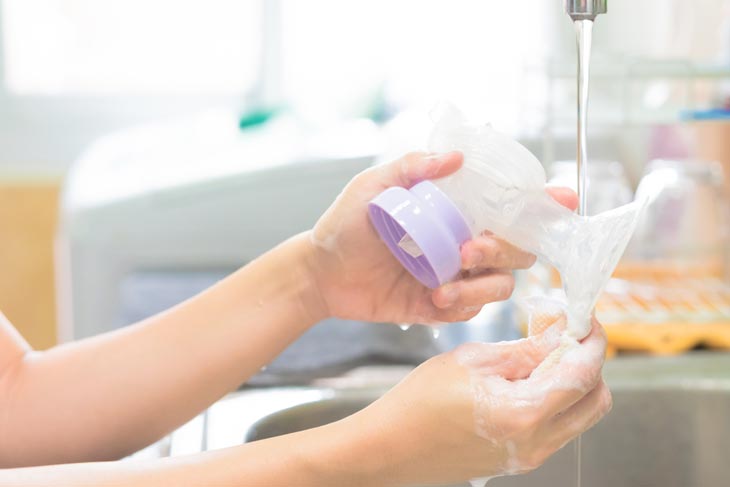
Breast shields, also known as flanges, are the portions of the pump that join your breasts. The connections link the separate backflow protectors, valves, tubing, and breast shields.
When to change breast shields: Breast guards or connections should be replaced every six months or as soon as rips or cracks appear.
Also, if your breast shells aren’t the ideal breast size, replace them. Keep in mind that breast size may fluctuate while you nurse.
Summary: When To Replace Breast Pump Parts
The frequency with which you should change your aspirator components is determined by which part and how frequently you pump. The following are recommendations for how frequently their pump parts should be replaced:
Depending on how much you pump, replace valve membranes from two weeks to two months.
- Replace every two months if you pump once a day.
- Pumping numerous on a daily basis equals 2-4 times of replacement a year.
Every 1-3 months, duckbill valves should be changed.
- Pumping once a day = every 2 to 3 months for a replacement.
- More frequent pumping equals monthly replacement for the valves.
Backflow protectors should be changed every 1 to 3 months.
- Once a day pumping for 2 to 3 months = Replace.
- More frequent pumping = 1.5 to 2 months.
Every six months, the tubing should be changed or when tears, leaks, cracks, moisture, mold, or mildew appear.
- When the tube glides freely off and on, the backflow preventer and the motor call for a new one.
Every six months, the flanges/breast shields should be changed. Look for cracks or rips that indicate that your flanges should be replaced immediately.
How To Get Rid Of Obsolete Components
We have spoken about replacing components, but what happens to the old ones once they’ve been replaced?
Many components and accessories come with boobie pumps. We’ve outlined what we’ll do with each of them when their lives come to an end:
Duck valves can be thrown out with the rest of your garbage. It is impossible to recycle them.
Backflow protectors’ external clear hard plastic sections can be recycled in your ordinary recycling bin. However, the internal silicone nipple white membrane must be discarded.
For valve membranes, you may throw them out with your ordinary garbage. They are not recyclable. Valves can be tossed out in regular trash.
You can recycle all breast shields, flanges, and connections in your ordinary trash.
Tubing should be discarded in the garbage. It is unrecyclable.
The recycling process is possible for bottles (neck teat), caps, and sealing discs. Pacifier teats are not recyclable and must be discarded in the garbage.
Boobie pumps should be removed or submitted to an electronics or computer recycling facility. Get in touch with your local government to find a reliable recycling center near you.
Questions Frequently Asked
Q. I just purchased a used pump. Which components do I need to replace?
Never buy milk collecting kits when buying used – simply buy the new pump. There is no method to sterilize milk collecting kits so that many people may use them.
If you buy a second-hand pump, make sure you get fresh new breast shields and backflow protectors.
According to the CDC (Centers for Disease Control and Prevention), used bottles are good to go if there is no trace of chips, cracks, or other defects.
Q. I only pump a couple of times a week; do I need to change parts as frequently as this?
Yes, to keep your pump in good functioning order and drain as much as possible throughout a single pumping session.
The preceding parameters are based on two categories of pumping users: those who express solely (mums who use their pumps 6-8 times per day) and those who pump 1-3 times per day (such as moms who pump and work and direct latch feed at home).
If you pump less frequently, components may last a little longer – but constantly look for a sign of wear and tear, such as lower suction power, slurping noises, shape changes, and rips.
Q. If I share a pump, how frequently do I need to change parts?
You will need your own milk collecting kit if you are sharing a pump. Milk collection bottles cannot become safe by washing in the sink or sterilizing for many uses.
As a result, apply the same principles as above to determine when to replace parts based on how often you use them.
Q. I recently had a second child and want to use my previous breast pump motor. Do I need to replace anything?
For a second infant, milk collection kits that comprise tubing, backflow protectors, valves, and bottles should be updated.
It is ideal to start with a fresh new kit so you can keep track of which components need to be changed and avoid progressive loss of suction strength over time.
Such problems may happen with older parts – especially if they’ve been lying unused for a while. It’s better to invest in a new set like a spectra breast pump for more convenient functions.
We recommend checking the operation of the pump motor ahead of time by assembling and connecting the pump kit and physically examining that the backflow guards are moving back and forth appropriately.
Breast pumping kits should be stored in a cool, dry location while not in use to avoid irreparable damage.
Q. Can I clean my breast pump with wet wipes between pumping sessions?
Some breast pump companies sell sanitary wipes designed exclusively for cleaning breast pumps and components.
When you don’t have access to soap or water, these wipes may be useful.
Even if these wipes are used, the FDA (the Food and Drug Administration) recommends cleaning breast pump parts that come into touch with breast milk with dishwashing detergent and warm water before using them again.
Conclusion
Your breastfeeding adventure begins the moment you receive boobie breast pump supplies.
You and your pump have a lot of work ahead of you, from unpacking it to learning how to operate it to late-night pumping sessions.
It is important to understand how often to replace breast pump parts to ensure safe breast pumping and safe feeding for your child.
We hope you will succeed because of our detailed instructions.
